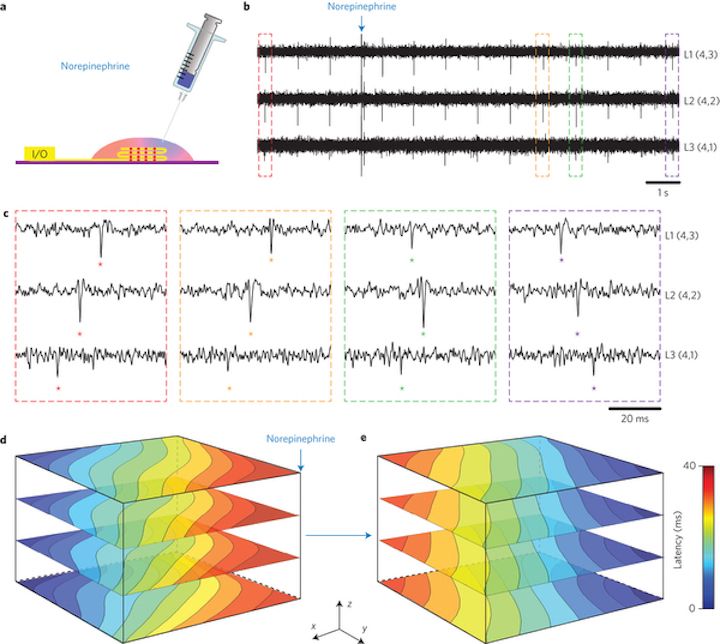Charles Lieber and Harvard colleagues have designed nanoscale electronic scaffolds, seeded with cardiac cells to produce a “bionic” patch to replace damaged cardiac tissue. The flexible electronics can also electrically stimulate the heart, and change the frequency and direction of signal propagation, as tissue feedback is continuously monitored.
Instead of being located on the skin’s surface, electronic components are integrated throughout the tissue, allowing the detection of early-stage cardiac instabilities and faster intervention. The device operates at lower, safer voltages than a traditional pacemaker.
The patch could also be used to monitor responses to cardiac drugs, or to help determine the effectiveness of drugs under development.
